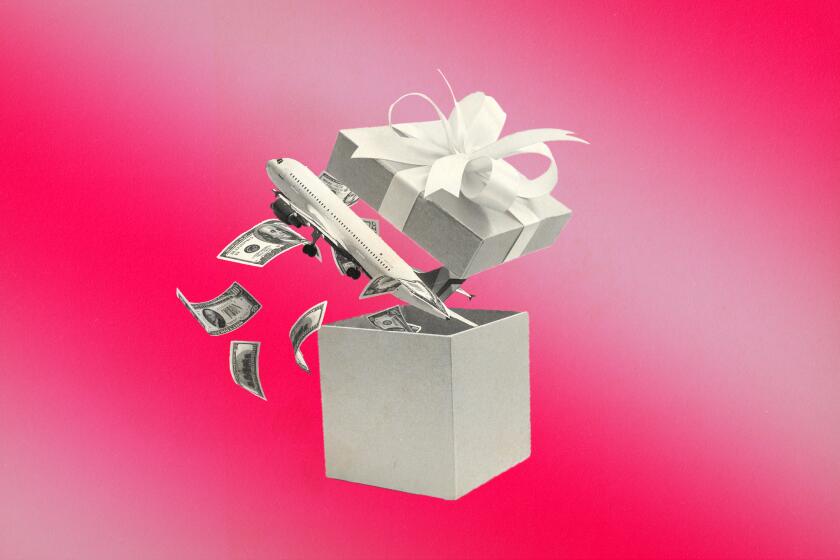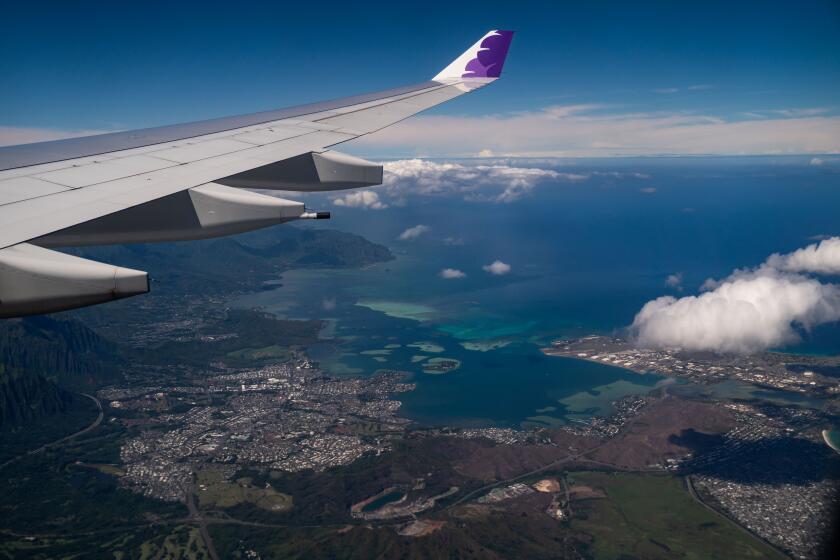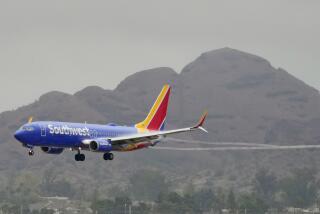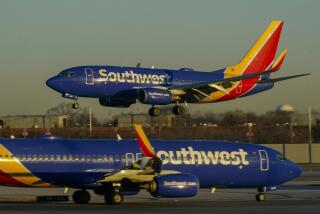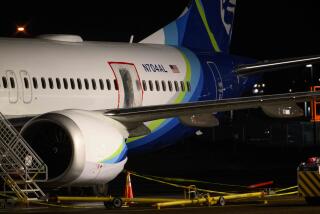Most airlines will fill middle seats soon. Not Delta
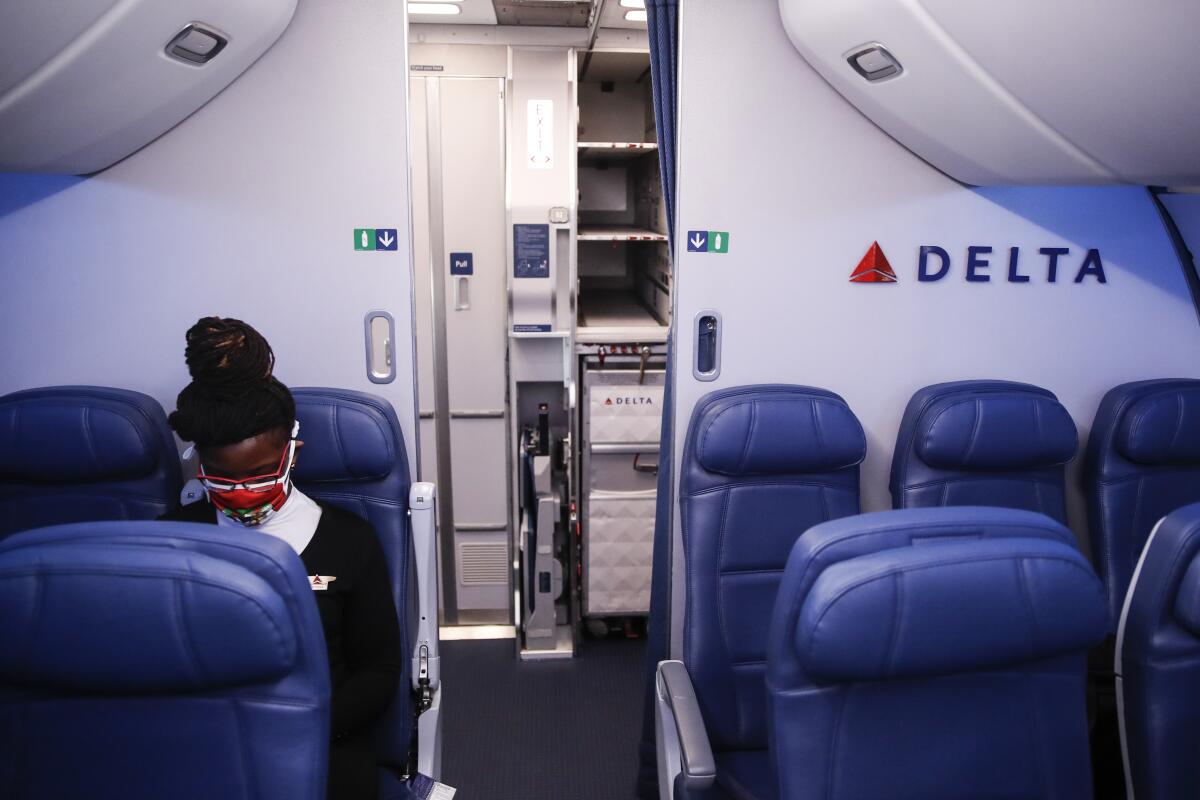
- Share via
Delta has pulled ahead in the ever-evolving pandemic-era jostling over which airplane is willing to keep middle seats open for the longest.
The carrier announced this week that it will keep middle seats empty — except in the case of households traveling together — through March 30.
When the COVID-19 pandemic hit, many airlines blocked middle seats to allow passengers to social distance while flying. The move was not mandated by federal officials, but because few people were flying, it was a relatively easy adaptation for airlines to make. Now, as air travel increases despite nationwide fast-rising infection rates, carriers have been moving away from middle-row promises.
Southwest Airlines has said it will unblock its middle seats starting Dec. 1, before the Christmas and New Year’s travel period.
Welcome to our comprehensive gift guide for the 2020 holiday season.
In an explanatory eight-part Twitter thread, Southwest said the “decision was not made lightly” to unblock middle seats. The airline pointed to scientific sources in changing its policy. For example, it cited an International Air Transport Assn. report that said just 44 cases of COVID-19 transmission — out of almost 1.2 billion passengers who have traveled since the beginning of 2020 — have been linked to flying.
For the 10% of you who said coronavirus would have no impact on your travel plans, available airfares are the feast before the feast.
Hawaiian Airlines will continue to block middle seats through Dec. 15.
Alaska Airlines has promised to block middle seats (except when large families need them) and limit the number of passengers onboard its planes through Jan. 6.
JetBlue said that it would limit capacity on holiday season flights but that middle seats would “no longer be blocked, and it’s likely you will be seated next to another customer.”
Neither American Airlines nor United Airlines makes any promises about middle seats in their pandemic-measures briefing for passengers.
The novel coronavirus that causes COVID-19 is spread in droplets when people talk, cough, sneeze, etc., and in smaller aerosol particles that may travel farther. The droplets may infect you by reaching your mouth or nose. For this reason, major air carriers require passengers to wear masks during flights.
The 14-day quarantines are over for those who can show a fresh negative COVID-19 test.
According to the “Risk of COVID-19 During Air Travel,” published Oct. 1 by the Journal of the American Medicine Assn., the risk of contracting COVID-19 on an airplane is low. It gave high marks to on-board air quality (a mix of fresh air from outside and air recycled through HEPA filters) and noted that passengers have little face-to-face contact.
The report advises passengers to not travel if they feel ill, always wear a mask while on a plane and wash or sanitize their hands frequently. “If there is an overhead air nozzle, adjust it to point straight at your head and keep it on full,” the report said. “Stay seated if possible, and follow crew instructions.”
Californians remain under stay-at-home rules, which urge people to avoid unnecessary travel and to gather outdoors in groups no larger than three households.
The national Centers for Disease Control and Prevention have urged Americans not to travel during Thanksgiving week, stressing that the closer people stay to home, the less risk they create.
More to Read
Sign up for The Wild
We’ll help you find the best places to hike, bike and run, as well as the perfect silent spots for meditation and yoga.
You may occasionally receive promotional content from the Los Angeles Times.

